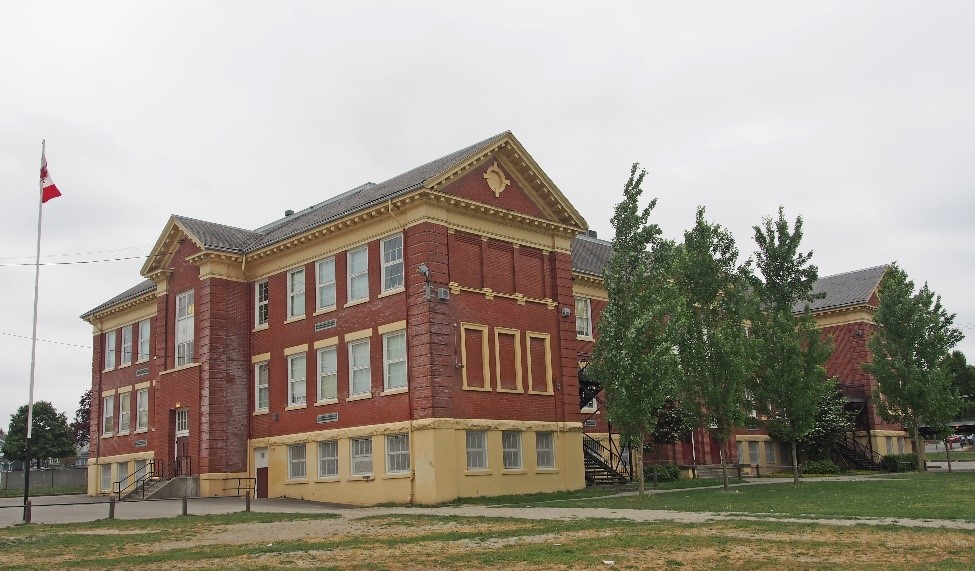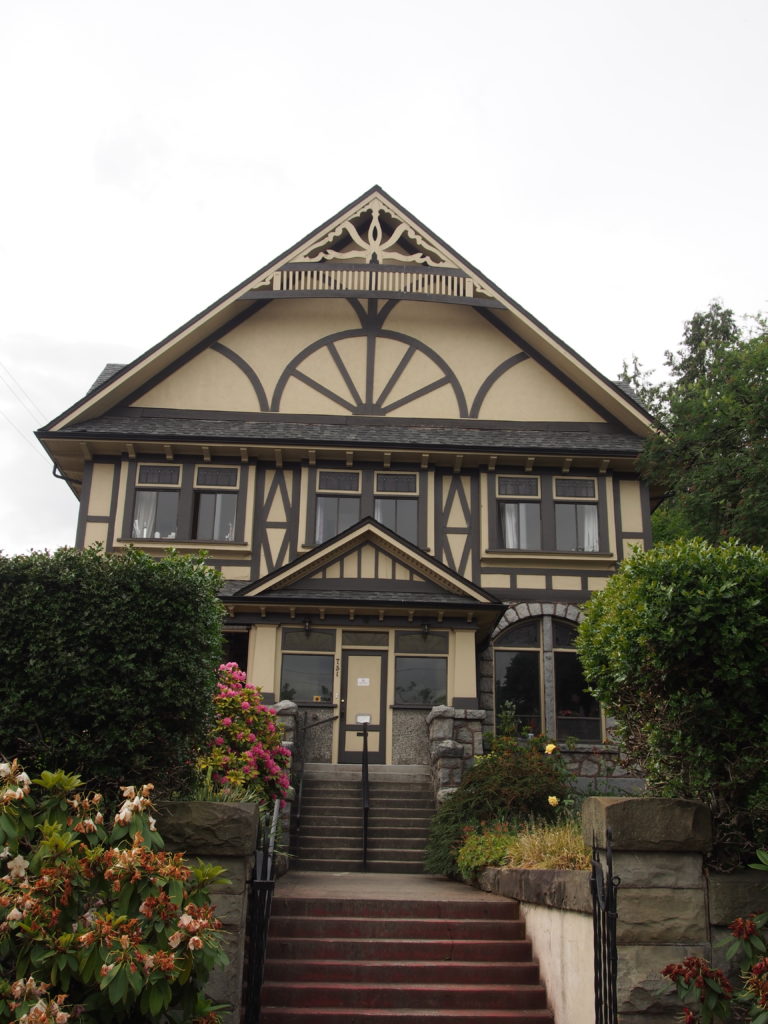Vancouver British Columbia Book 5 in Colour Photos
Lynn Canyon Park – In the late 1800s, Lynn Valley’s centuries old Douglas fir and western red cedar were milled into lumber for export to Eastern Canada, the United States and Europe. Many of these trees were over ninety meters high and eleven meters in circumference. In the park, you can see some of the stumps from these huge trees.
Moderate temperatures and an average annual rainfall exceeding 150 centimeters provide excellent growing conditions. The lush second growth forest is good evidence of the productivity of the area. The large trees which now cover the part are on average only seventy to ninety years old. The forest is mostly Douglas fir, western hemlock, and western red cedar. Along the creek where flooding occurs, sitka spruce, cottonwood, alder and dense shrub undergrowth are found.
Lynn Canyon Park officially opened as a municipal park in 1912. The McTavish brothers, whose company originally logged the area, donated five hectares of land fronting on Lynn Creek. The District of North Vancouver added another four hectares. The suspension bridge was also opened in 1912; it hangs twenty stories (about fifty meters) above Lynn Creek. In 1991, the District of North Vancouver added 241 hectares to the park. The Park has many hiking trails.
Lynn Canyon Park is a coastal temperate rain forest with canyons, pools and creeks. There is a variety of local flora and fauna including 100-year-old Douglas fir trees with younger western hemlock and western red cedar and many types of moss below them.

Lynn Valley Ecology Centre – Ecology is the study of living systems in relation to one another and their environment. The Lynn Valley Ecology Centre features displays showing the interrelationships between plants, animals and man.
The high sub-alpine and alpine communities have been developing since the last glacial ice melted. Starting with rock, the actions of water, wind, heat and cold can produce soil, but very slowly. The addition of plants speeds up the process, then animals move in and ultimately a living community clothes the rock. At high elevations and on the steep slopes, the soil-building agents may, at the same time, work against the accumulation of soil. Broken rocks tend to roll to the valley floors, singly or as avalanches, fine matter may blow away in the wind or be carried by moving glaciers and running water down to lower levels. Anything that tends to loosen accumulating soils promotes erosion.
Even when the plants and the soils are established, existence remains precarious. The growing season is usually sort, and even during that time the temperatures are often low and the weather capricious. Plants grow were slowly.
The animals that live in the alpine, from insects to the big mammals, are directly or indirectly dependent on the plants, while on the other hand, their activities influence the vegetation. All the living things interact together in a system which is called The Fragile Network. Damage one part of the community and the whole community will feel the effects.
Since man has extended his operations to alpine heights, the living community is now also faced with grazing cattle, trampling human feet, all-terrain vehicles, and activities which involve the devastation by bulldozers, such as mining, logging, ski developments and communication stations.
We were in the area at the right time to tour Purdy’s Chocolate Factory. Richard Carmen Purdy’s love of chocolate created the beginnings of a tradition that continues to this day. In 1907 Mr. Purdy opened a tiny shop in downtown Vancouver on Robson Street. His reputation for making superb chocolates grew quickly, earning him the admiration of chocolate lovers throughout the city. Purdy’s Chocolatiers use only high quality, fresh ingredients. Two large melters contain 30,000 pounds each, and two smaller ones contain 10,000 pounds each. The pipes on the ceiling distribute chocolate throughout the factory. On an average day, Purdy’s goes through 10,000 pounds of chocolate. Purdy’s roasts an average of 3,000 pounds of nuts per week. Each day the dairy delivers fresh candy cream and butter. Candy centers are cooked over an open flame up to temperatures of 240o. After cooking, caramels, fudge and brittles are poured onto steel tables for cooling. The steel tables have water chambers that can be cooled or heated depending on the recipe. In an eight-hour day Purdy’s can produce over 3,000 pounds of caramel. Purdy’s shell molding Chocolatiers produce Hedgehogs, Melties and Smoothies. 72,000 Belgium Milk Chocolate Hedgehogs can be produced in a day. Cherries are put in the glazer to evenly coat them. At the end of the tour, we arrived at the gift shop to make some purchases. The next day we visited Charlies Chocolate Factory, a much smaller operation but with a larger display store.









